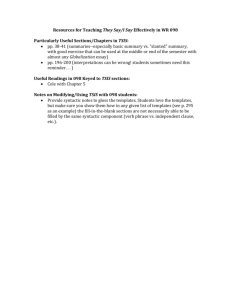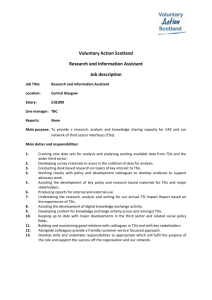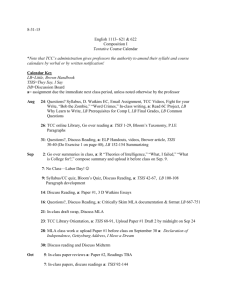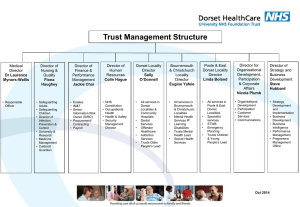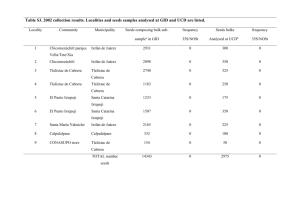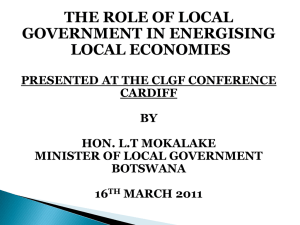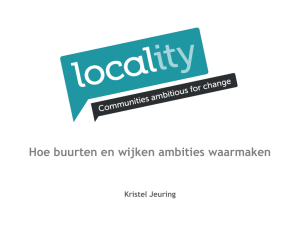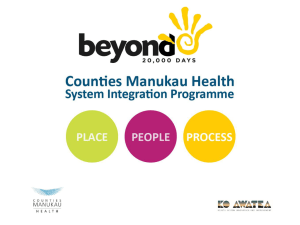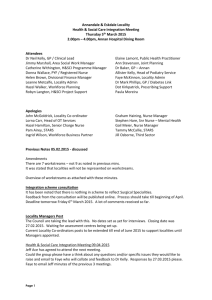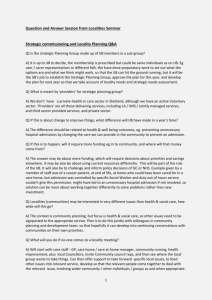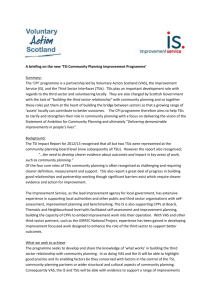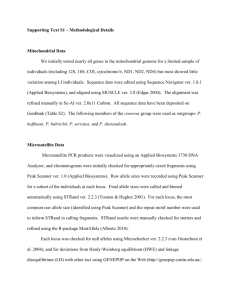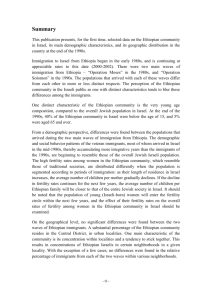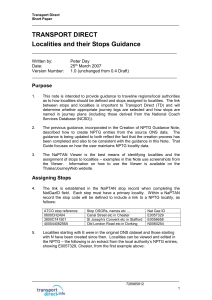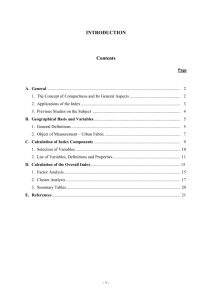The notes from this forum can be found here (, 20kb)
advertisement
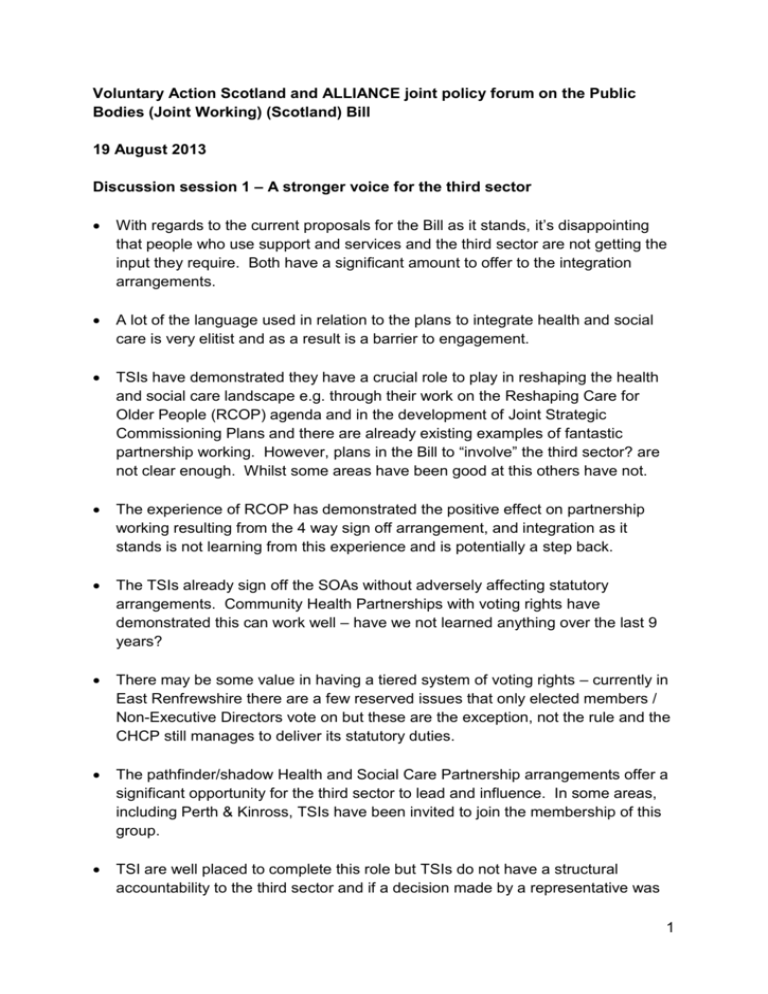
Voluntary Action Scotland and ALLIANCE joint policy forum on the Public Bodies (Joint Working) (Scotland) Bill 19 August 2013 Discussion session 1 – A stronger voice for the third sector With regards to the current proposals for the Bill as it stands, it’s disappointing that people who use support and services and the third sector are not getting the input they require. Both have a significant amount to offer to the integration arrangements. A lot of the language used in relation to the plans to integrate health and social care is very elitist and as a result is a barrier to engagement. TSIs have demonstrated they have a crucial role to play in reshaping the health and social care landscape e.g. through their work on the Reshaping Care for Older People (RCOP) agenda and in the development of Joint Strategic Commissioning Plans and there are already existing examples of fantastic partnership working. However, plans in the Bill to “involve” the third sector? are not clear enough. Whilst some areas have been good at this others have not. The experience of RCOP has demonstrated the positive effect on partnership working resulting from the 4 way sign off arrangement, and integration as it stands is not learning from this experience and is potentially a step back. The TSIs already sign off the SOAs without adversely affecting statutory arrangements. Community Health Partnerships with voting rights have demonstrated this can work well – have we not learned anything over the last 9 years? There may be some value in having a tiered system of voting rights – currently in East Renfrewshire there are a few reserved issues that only elected members / Non-Executive Directors vote on but these are the exception, not the rule and the CHCP still manages to deliver its statutory duties. The pathfinder/shadow Health and Social Care Partnership arrangements offer a significant opportunity for the third sector to lead and influence. In some areas, including Perth & Kinross, TSIs have been invited to join the membership of this group. TSI are well placed to complete this role but TSIs do not have a structural accountability to the third sector and if a decision made by a representative was 1 questioned it is unclear what the accountability arrangements would be. We would need to ensure that the role of the third sector representative was clearly defined and that appropriate governance structures were in place. Linking the Bill more directly to Community Empowerment and Renewal Bill may be an option. The two bills need to be complementary but are out of sync. Reference should be made to community planning and empowerment in the joint working bill. There is no mention of community resilience. Third sector is a provider and a proxy for community engagement. There is a need for national outcomes around community resilience in the national outcomes for health and wellbeing and the national standards for community engagement need to be used as a mechanism to measure the extent and effectiveness of the engagement process. Under the Change Fund arrangements the third sector was presented as an equal partnership across sectors, however, in practice it has not been viewed this way because the 3rd sector doesn’t have statutory responsibility and doesn’t hold the budgets. Guidance related to this Bill should outline the role and expectations for each partner. The Bill needs to include explicit reference to the role of the third and independent sectors. Including reference to “all sectors” may not be strong enough. The delivery and planning principles as outlined within the Bill do not reference assets and are overly service orientated. The integration principles do not articulate strongly enough the 3rd sector role in terms of locality planning. Scrutiny and minimum standards relating to the health and wellbeing outcomes should be outlined more explicitly. Joint strategic commissioning will be key for the sector – this may be for the guidance rather than the bill but the sector’s role and the sector signing off on plans needs to be there somewhere Discussion session 2 – Locality planning Discussion The Scottish Government’s “All Hands On Deck” report is not strong enough around integration and locality planning – and asks more questions than provides answers. The locality planning and integration principles as they stand are disjointed. This agenda needs to more effectively take account of national engagement 2 standards. It was felt that Locality Planning should be part of community planning rather than separate and co-terminus with community planning structures. For local commissioning plans to be successful they need to work in tandem with Single Outcome Agreements and have accurate data. Generally, it was felt the locality planning principles are more closely aligned to the approach to public service reform articulated by the Christie Commission. This is in direct contrast to the ‘Integration planning and delivery principles’. The relationship between localities and the Health and Social Care Partnership Boards has not been adequately defined. TSIs felt it was crucial that there was clear dialogue between the Boards and localities, and that the 3rd sector’s voice needed to be heard at both levels. There is not a one size fits all approach and the Government shouldn’t be overly prescriptive about the way localities are organised There needs to be a more detailed discussion at a local and national level about how localities planning groups will operate – if they have devolved budgets what degrees of freedom will be built in; who will make this decision and how will it be made; how will they make decisions; the make-up of the group. Different areas and the localities within the different areas will be able to effectively accomplish different levels of devolution based on their history. If this isn’t appropriately thought through could lead to a postcode lottery or increase health inequalities Locality planning could place a further demand on TSIs who are not currently backed with adequate resources. The public service reform agenda has placed an expectation on the third sector to work differently, and TSIs have had a leading role in this that is not being appropriately resourced. Whilst in some areas communities/localities are geographically defined, for instance in Argyll and Bute, in an urban context this isn’t really a realistic prospect. Many people do not recognise local boundaries. For instance, there are 21 area structures in Glasgow. TSIs want to see a shift toward preventative spend from acute spend. How will disinvestment happen? Disinvestment decision making processes are crucial and decision makers need to be intelligent about both the needs of their local area, health and wellbeing of the community and budgets. Locality planning should be seen as an opportunity to ensure the preventative agenda becomes a reality through involvement of the third sector. 3 Realistically this is only the start – TSIs accept that: o o o o It will be a long journey We will need to ask difficult questions Can’t achieve everything at once We will need to stay positive There needs to be clarification from the Government around the percentage of spend that is guaranteed or a target for localities. There’s not a one sized fit all model for allocation of resources and resources at a locality level. 4
